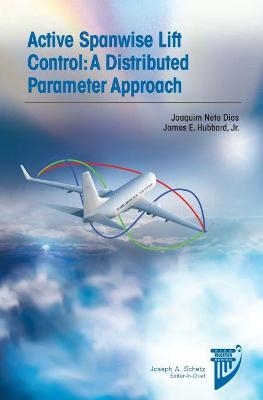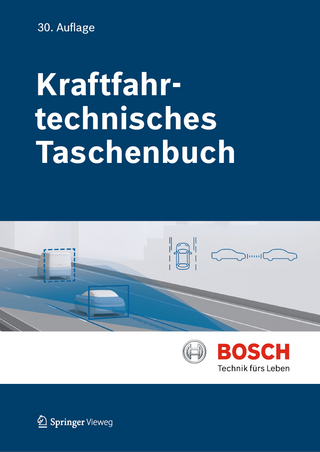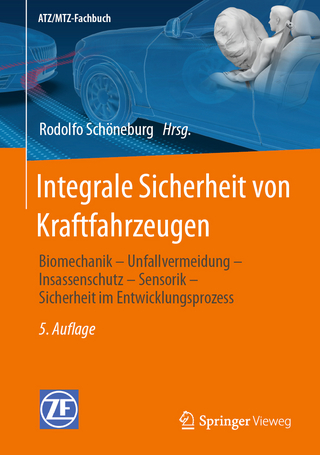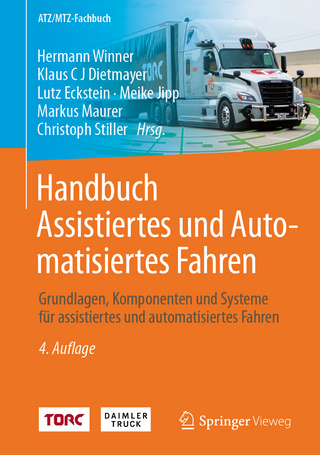
Active Spanwise Lift Control
American Institute of Aeronautics & Astronautics (Verlag)
978-1-62410-599-9 (ISBN)
Active Spanwise Lift Control presents a novel approach to tackle the gust alleviation problem. Traditional approaches typically attempt to suppress the structural response at discrete points of the wing using only the conventional control surfaces (aileron, elevator, rudder), resulting in limited control authority, high-bandwidth actuator requirements, and necessity of gust field measurements ahead of the aircraft. In this book, the authors directly address the spanwise behavior of aerodynamic loads, as this is what should be primarily controlled. Because the gust loads are mainly caused by disturbances in the spanwise lift, the aim is at controlling the shape of the lift distribution profile along the span. Therefore, this distributed approach allows control of the loads at all points of the wing structure. Moreover, using modal decomposition concepts, the control surfaces can be designed to maximize controllability of the most relevant aerodynamic modes, which naturally results in lower actuator rate requirements.
In the work herein, the unsteady aerodynamics of a finite wing featuring multiple trailing edge flaps is modeled using the Unsteady Vortex Lattice Method (UVLM), yielding a linear, time-invariant, high-order state-space model. An Eigensystem Realization Algorithm (ERA) is applied for model-order reduction and modal identification, providing aerodynamic mode shapes and associated eigenvalues. By representing the system output (lift distribution) as a truncated superposition of aerodynamic mode shapes, a low-order MIMO modal representation is obtained, suitable for controller synthesis. This methodology is used to synthesize regulators, to suppress gust disturbances in lift distribution, and trackers, to dynamically follow any desired reference lift profile. A special observer structure decouples the gust input from the state estimation process and provides estimates for the gust amplitude along time, thus rendering the gust measurements ahead of the aircraft unnecessary.
Dr. Joaquim Neto Dias is currently a Captain in the Brazilian Air Force, working as flight test engineer at the Flight Test and Research Institute (IPEV). He received a BS (2008) and MS (2012) in Aeronautical Engineering from the Aeronautics Institute of Technology (ITA), in Brazil, and a PhD in Aerospace Engineering (2019) from the University of Maryland, College Park. He was qualified as experimental fixed-wing flight test engineer in 2010 and served for six years as flight test instructor at the Brazilian Air Force Test Pilot School (EFEV), logging 350+ hours in 15+ types of aircraft. Dr. Dias has published a dozen papers on aircraft system identification, flight dynamics and control. He is a member of AIAA and SFTE (Society of Flight Test Engineers). Dr. James E. Hubbard, Jr. is presently the TEES Eminent Professor and permanent Fellow of the Hagler Institute for Advanced Systems at Texas A&M University (TAMU). He has been a Full Professor serving academia since 2004 and has held prior leadership positions in Industry and Government as well. He was also appointed Glenn L. Martin Institute Professor Emeritus at the University of Maryland. He is a Fellow and lifetime member of the American Institute of Aeronautics and Astronautics (AIAA) as well as a Fellow of the American Society of Mechanical Engineers (ASME) and Fellow of the Society of Photonics and Industrial Engineers (SPIE). His research efforts are focused on Adaptive Structures, System Identification, and Modeling and Control of Distributed Parameters Systems. He has authored or co-authored more than 150 scientific articles, and published four books. Dr. Hubbard was elected to the National Academy of Engineering in 2016.
Preface
Chapter 1: Introduction
Chapter 2: Unsteady Aerodynamic Modeling of a Multiflap Wing
Chapter 3: Review of Model Order Reduction Methods
Chapter 4: Modal Identification of Aerodynamic Systems
Chapter 5: Spatial Control of Spanwise Lift Distribution
| Erscheinungsdatum | 29.10.2020 |
|---|---|
| Verlagsort | Reston |
| Sprache | englisch |
| Themenwelt | Technik ► Fahrzeugbau / Schiffbau |
| Technik ► Luft- / Raumfahrttechnik | |
| ISBN-10 | 1-62410-599-8 / 1624105998 |
| ISBN-13 | 978-1-62410-599-9 / 9781624105999 |
| Zustand | Neuware |
| Haben Sie eine Frage zum Produkt? |
aus dem Bereich


